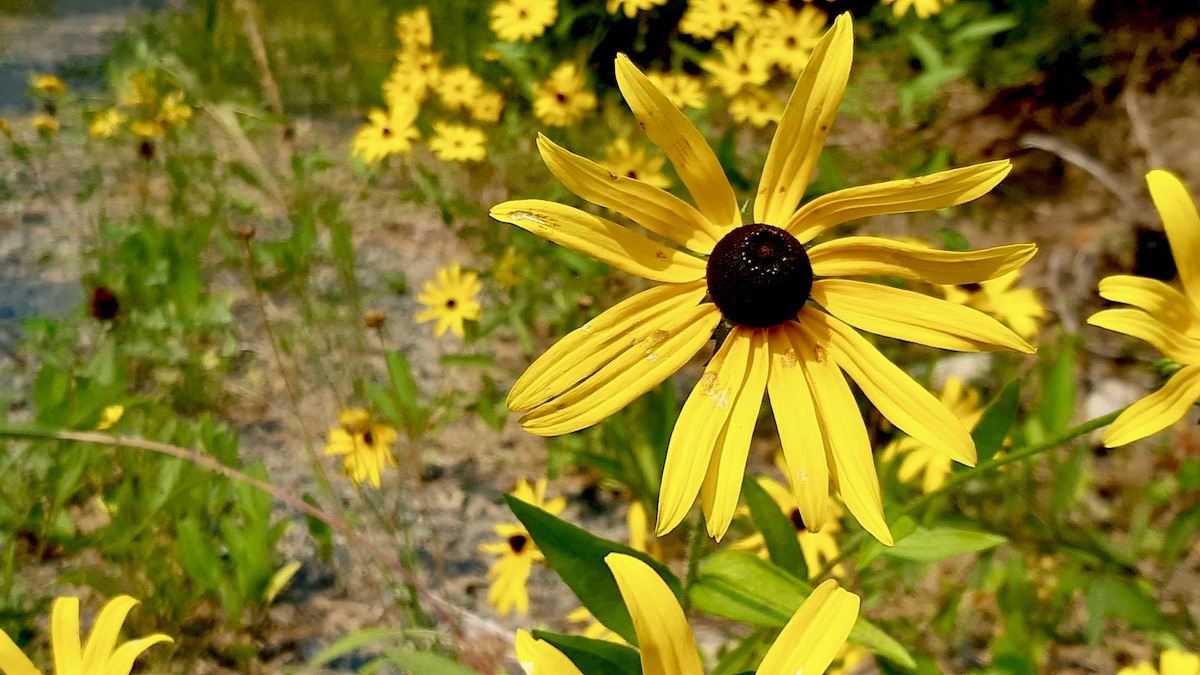
A vibrant Black-eyed Susan stands tall, its golden petals reaching towards the sun. The deep, rich center of the flower provides a striking contrast, making it a beloved sight in Northern Ontario meadows.
A Sunny Staple of Our Landscape
There is a cheerful radiance to the Black-eyed Susan, a flower that seems to capture the very essence of a long, warm summer day. Scientifically known as Rudbeckia hirta, this plant is a familiar and welcome sight across Northwestern Ontario and Manitoba, especially in open fields, along roadsides, and in community recreation areas like hiking trails. Its golden petals surrounding a deep, dark brown center make it instantly recognizable and a favorite of both people and pollinators. The Black-eyed Susan is a member of the sunflower family and holds a place of honor among our local flora, blooming from mid-summer well into the fall.
Beyond its aesthetic appeal, the Black-eyed Susan has a rich history of use and significance. Indigenous peoples have long recognized the plant’s various properties, using different parts of it for medicinal purposes. The root, for example, was traditionally used to make a tea to treat colds and to help boost the immune system. Its leaves were sometimes crushed and applied as a poultice to help with snakebites and swelling. While we admire the flower today for its beauty, it’s a good reminder of the deep knowledge our ancestors held about the natural world that surrounded them.
For those with a green thumb, Black-eyed Susans are a fantastic choice for a native garden. They are remarkably resilient and drought-tolerant, making them an easy-to-care-for perennial. Their bright, daisy-like flowers are a beacon for bees, butterflies, and other essential pollinators, contributing to the health of our local ecosystems. The plant’s ability to thrive in various soil conditions and its long blooming period make it a perfect addition to any garden or a naturalized area, bringing a splash of golden sunshine to the landscape.
As we continue to document the incredible variety of plants and flowers in our region, the Black-eyed Susan stands out as a true symbol of our summer. Its cheerful disposition reminds us of the simple beauty that can be found just outside our doors, whether we’re on a remote trail or in a local park. This flower, with its sunny disposition and ecological importance, is a perfect example of the many natural treasures that enrich our lives and our landscapes in Northern Ontario.





